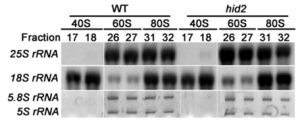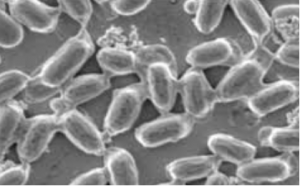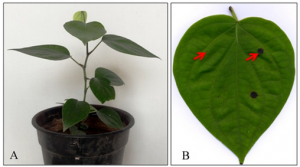|
Rapid hyperosmotic-induced Ca2+ responses in Arabidopsis thaliana exhibit sensory potentiation and involvement of plastidial KEA transporters
Friday, 2016/09/02 | 17:58:31
|
|
Aaron B. Stephan, Hans-Henning Kunz, Eric Yang, and Julian I. Schroeder SignificanceHow plant roots initially sense osmotic stress in an environment of dynamic water availabilities remains largely unknown. Plants can perceive water limitation imposed by soil salinity or, potentially, by drought in the form of osmotic stress. Rapid osmotic stress-induced intracellular calcium transients provide the opportunity to dissect quantitatively the sensory mechanisms that transmit osmotic stress under environmental and genetic perturbations in plants. We describe a phenomenon whereby prior exposure to osmotic stress increases the sensitivity of the rapid calcium responses to subsequent stress. Further, mutations in plastidial K+ exchange antiporter (KEA)1/2 and KEA3 transporters were unexpectedly found to reduce the rapid osmotic stress-induced calcium elevation. These findings advance the understanding of the mechanisms underlying the rapid osmotic stress response in plants. AbstractPlants experience hyperosmotic stress when faced with saline soils and possibly with drought stress, but it is currently unclear how plant roots perceive this stress in an environment of dynamic water availabilities. Hyperosmotic stress induces a rapid rise in intracellular Ca2+ concentrations ([Ca2+]i) in plants, and this Ca2+ response may reflect the activities of osmo-sensory components. Here, we find in the reference plant Arabidopsis thaliana that the rapid hyperosmotic-induced Ca2+ response exhibited enhanced response magnitudes after preexposure to an intermediate hyperosmotic stress. We term this phenomenon “osmo-sensory potentiation.” The initial sensing and potentiation occurred in intact plants as well as in roots. Having established a quantitative understanding of wild-type responses, we investigated effects of pharmacological inhibitors and candidate channel/transporter mutants. Quintuple mechano-sensitive channels of small conductance-like (MSL) plasma membrane-targeted channel mutants as well as double mid1-complementing activity (MCA) channel mutants did not affect the response. Interestingly, however, double mutations in the plastid K+ exchange antiporter (KEA) transporters kea1kea2 and a single mutation that does not visibly affect chloroplast structure, kea3, impaired the rapid hyperosmotic-induced Ca2+ responses. These mutations did not significantly affect sensory potentiation of the response. These findings suggest that plastids may play an important role in early steps mediating the response to hyperosmotic stimuli. Together, these findings demonstrate that the plant osmo-sensory components necessary to generate rapid osmotic-induced Ca2+ responses remain responsive under varying osmolarities, endowing plants with the ability to perceive the dynamic intensities of water limitation imposed by osmotic stress.
See: http://www.pnas.org/content/113/35/E5242.abstract.html?etoc PNAS August 31 2016; vol.113; no.35: E5242–E5249
|
|
|
|
[ Other News ]___________________________________________________
|


 Curently online :
Curently online :
 Total visitors :
Total visitors :
(11).png)
(14).png)



















